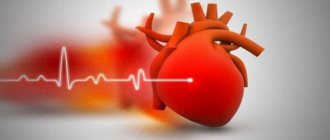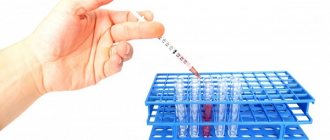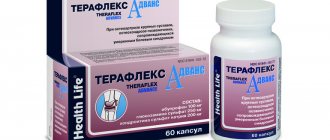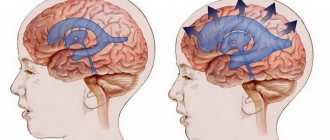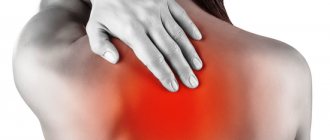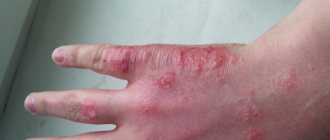A balanced intestinal microflora is the basis for stable functioning of the body. The intestines are inhabited by various types of microorganisms, each of which performs a specific function.
When the qualitative and quantitative composition of obligate (normal) and opportunistic microflora is disturbed, dysbacteriosis (dysbiosis) develops - a condition characterized by a decrease in the general and local resistance of the body.
To optimize the composition of microflora, preparations are used that contain live microorganisms characteristic of the normal biocenosis of the gastrointestinal tract - probiotics.
Characteristics of medicines
Eubiotics are microorganisms that always live in the large and small intestines. They restore the biocenosis, eliminating gastrointestinal disorders. In the process of active growth and reproduction, they inhibit pathogenic bacteria belonging to pathogenic and opportunistic biocenosis. This avoids the penetration of microbes into the digestive tract with the subsequent development of an infectious process.
Beneficial bacteria and single-celled fungi perform many functions in the human body:
- production of vitamin H, with the participation of which the most important metabolic processes occur;
- production of folic acid and vitamin K, necessary for the proper functioning of the cardiovascular, central and peripheral nervous systems;
- increasing the immunity of the human body to the action of external and internal factors;
- accelerated removal of toxic substances from tissues.
The active composition of agents for restoring intestinal microflora is often represented by lactic acid bacteria, enterococci, bacilli, and propionobacteria.
In the treatment of diarrhea and dysbiosis in children, preparations with yeast fungi Saccharomyces are more often used.
Why is it so important to use synbiotics for dysbiosis?
When probiotics enter the gastrointestinal tract, they begin to normalize the microflora while simultaneously suppressing pathogenic bacteria. However, the beneficial bacteria contained in probiotics begin to die quickly. Microorganisms begin to actively reproduce only when prebiotics are taken.
The synbiotic contains two nutritional supplements at the same time. When it enters the gastrointestinal tract, it not only normalizes the qualitative composition of the microflora, but also changes the pH of the environment to the acidic side. As a result, the activity of beneficial bacteria increases.
Nutritional supplements have proven themselves well. They do not cause side effects and are indicated in treatment for people of various age groups. Nutritional supplements are recommended for pregnant women to take after a hormonal shift to normalize the intestinal microflora.
The list of food additives increases every year.
The principle of action of drugs for the intestines
The pharmacological effectiveness of eubiotics is determined by the properties of their active ingredients. Having penetrated the intestines, bifidobacteria, lactobacilli, and enterococci rapidly multiply, causing fermentation of lactose. This causes the pH to shift to the acidic side. Such an environment is destructive for almost all pathogenic microorganisms, so they lose their ability to grow and die.
Reducing the population of harmful bacteria leads to a decrease in the severity of all symptoms of digestive disorders. Preparations for restoring intestinal microflora are capable of inhibiting the following representatives of pathogenic biocenosis:
- clostridium;
- staphylococci;
- pseudomonas;
- salmonella;
- shigella;
- Yersinia;
- coli.
Eubiotics are characterized by the ability to stimulate the production of substances with antibacterial activity. Course use of drugs also has a powerful intoxicating effect.
During their life activity, pathogenic bacteria release products into the surrounding space that cause damage to healthy tissues. Beneficial microorganisms bind them and then evacuate them from the body with each bowel movement.
Sources of natural metabiotics
Butyric acid, necessary for adequate functioning of the digestive system, is contained in:
- butter;
- cheese;
- milk.
We recommend reading:
Probiotics and prebiotics: definition and list of drugs
Succinic acid is found in:
- gooseberries;
- grapes;
- cabbage
Their content in food is small, but for normal functioning of the body this will be enough.
In continuation of the topic, be sure to read:
- Probiotics and prebiotics: definition and list of drugs
- What are probiotics, names of drugs and their types
- What are prebiotics, their benefits and list of drugs
- What are synbiotics, their benefits and list of drugs
- Symbiotics: concept, list of drugs and products
- List of intestinal antiseptics and their use
- Lactulose-based laxatives: list of products and features of their use
- What to take along with antibiotics to prevent intestinal dysbiosis?
- Bifidobacteria and lactobacilli in one preparation
- Intestinal bacteria in preparations: list of medications and their use
Indications for use
Probiotics are included in treatment regimens for adults and children to eliminate signs of dysbiosis. The pathology is clinically manifested by constipation, diarrhea, poor appetite, abdominal pain, rashes on the skin and mucous membranes.
The use of drugs helps prevent the penetration of pathogenic bacteria into the systemic bloodstream with the further development of sepsis, which threatens human health. Probiotics are also prescribed to patients when they are diagnosed with the following pathological conditions:
- defecation disorders, including those caused by taking medications;
- irritable bowel syndrome;
- local or systemic allergic reaction;
- inflammation in one of the parts of the digestive tract;
- excessive gas formation, accompanied by bloating, belching, pain in the epigastric region.
Classification of drugs for dysbiosis
Probiotics alone are not enough to improve microflora . They take medications for rumbling and bloating, heaviness in the abdomen, and heartburn. The goal of symptomatic therapy is to relieve the patient of discomfort. Next, it is necessary to normalize the functioning of the intestines - our “second brain”, an organ on which the functioning of the immune system depends 80%.
Interesting on the topic:
Effective drugs against dysbiosis for children
How to treat intestinal dysbiosis in adults
12 effective folk remedies for dysbiosis
How do probiotics work?
The more diverse the microflora, the better for the body . Therefore, medications and dietary supplements with different types and strains of beneficial microorganisms are preferable.
How probiotics work:
- They stop the depletion of intestinal microflora during antibiotic therapy, help increase the number of “good” microbes and suppress “bad” microbes.
- Lactobacilli act predominantly in the small intestine, bifidobacteria - in the large intestine. They enrich the intestines of a child and an adult with beneficial microorganisms if there is an imbalance due to changes in diet or stress.
- In addition to the direct effect on the composition of microflora, they have an indirect positive effect on the body. After developing healthy intestinal flora for several weeks, digestion improves and the immune system is strengthened.
- “Good” bacterial strains reduce intestinal inflammation and prevent its development.
It is not easy for bacteria from a drug to take root in the intestines of a particular person. Therefore, experts recommend taking a probiotic from 2 weeks to 1.5 months.
Attention! It is more difficult to restore the microflora of a child’s intestines than an adult.
The probiotic in powder form contains specially dried microorganisms . They resume their vital functions when mixed with liquid. It is important that beneficial bacteria are viable, colonize the intestines and begin to participate in metabolism.
The ampoules are opened and the powder is dissolved before use . You cannot store the already prepared solution. Liquids are easier to dose and give to young children. Reviews from parents and pediatricians about probiotic drops are most favorable.
Original imported medicines are more expensive. There are inexpensive, but no less effective domestic drugs. The possibility of replacement should be discussed with your doctor or pharmacist.
Sorbents
This group is prescribed for flatulence, overeating, dyspepsia, allergic diseases, dysbacteriosis, and parasite infestation.
The cheapest intestinal sorbent is activated carbon. White coal is produced not from carbon mass, but from silicon dioxide. The drug is affordable, acts quickly and effectively. A relatively expensive intestinal sorbent, Enterosgel, absorbs cholesterol, bacteria, some viruses and fungi .
The selective effect is manifested in the preservation of the molecules of most vitamins, proteins, and enzymes. Medicine for diarrhea, allergies and dysbiosis for adults is produced in the form of an unsweetened paste, for children - in the form of a fruit-flavored gel. Adsorbents retain toxins, microbes, and gases in the pores. Excretion is carried out naturally - through the rectum. Enterosgel and Polysorb MP have the greatest absorption capacity . These drugs are 50-100 times more expensive than activated carbon. Smecta is often prescribed to a small child. A cheap domestic analogue is Neosmectin (140 rubles).
Enzymes
The preparations contain pancreatin . The pancreatic enzyme complex improves digestion and absorption in the intestine. With dysbacteriosis, both processes are disrupted.
"Festal", in addition to pancreatin, contains bile acids . It is recommended for use in cases of enzyme deficiency resulting from dysbacteriosis, in combination with cholecystitis.
Prebiotics and symbiotics
The composition of the microflora is individual, and it is difficult for “foreign” bacteria to take root . The reliability of probiotics is enhanced by prebiotics. Most often it is inulin, a plant polysaccharide. The prebiotic serves as food for the “good” bacteria.
They produce symbiotics - complexes of beneficial microorganisms with inulin and plant extracts . The list of drugs in the mid-price category against dysbiosis can include “Maxilak”, “Acipol Active”, “Multiflora”.
Restoring motor function
Prokinetics stimulate gastrointestinal peristalsis and facilitate the transport of bolus food in the intestine.
The motor function of the gastrointestinal tract is impaired due to dysbacteriosis, therefore drugs of this group are included in complex therapy. "Motilium" is a drug for the treatment of bloating and dyspepsia . Domperidone in the composition accelerates gastric emptying, improves intestinal motility, and has few side effects.
To treat dyspepsia and flatulence caused by dysbacteriosis, you can drink “Hofitol” (tablets or syrup) . Regulates gastrointestinal motility and has an anti-inflammatory effect "Iberogast" in the form of drops.
Stimulator of intestinal epithelium restoration
"Hilak Forte" helps beneficial intestinal microflora and promotes epithelial regeneration . Drops are prescribed for many gastrointestinal diseases. The drug can be taken during pregnancy and breastfeeding.
Vitamins also help restore the intestinal mucosa. “Bactistatin” is an affordable dietary supplement that combines the properties of an intestinal sorbent, probiotic and vitamin supplement.
Biological products based on a live strain
“Sporobacterin” liquid is a suspension that contains biomass of living bacteria . Russian researchers have created a biological product that does not have the disadvantages of dry powders with microbial cultures. Bacteria remain alive in liquid for two years or more.
Each dosage form of preparing live strains of beneficial bacteria has pros and cons. Part of the probiotic is destroyed by hydrochloric acid in the stomach. The capsule shell protects bacteria from negative effects and dissolves only in the intestines.
Immunomodulators
"Probifor" is an immunobiological drug that normalizes intestinal microflora .
The medicine is prescribed for dysbiosis, intestinal infections, and diarrhea. "Imudon" contains dried strains of 10 types of microorganisms , including lactobacilli. An immunostimulant of bacterial origin is used for dysbiosis of the oral cavity and ENT diseases.
Pyrogenal, based on bacterial lipopolysaccharide, has an immunomodulatory effect. It is used for dysbacteriosis and other diseases of the gastrointestinal tract and genitourinary system.
Types of drugs to restore intestinal microflora
The pharmacy assortment contains probiotics in various dosage forms. These are tablets, enteric-coated capsules, lyophilisates for preparing solutions, drops and even rectal suppositories.
In the treatment of diseases occurring against the background of the death of beneficial microflora, not only drugs are used, but also biologically active additives (BAA). In addition to beneficial bacteria, they may contain vitamins and organic substances necessary for their reproduction.
Probiotics
Probiotics can be bifid-containing, lactose-containing, or coli-containing. They may also include aerococci and bacilli. When choosing medications, the doctor must take into account the results of laboratory tests, the nature and severity of symptoms.
The experience of a gastroenterologist or infectious disease specialist is also important. Many imported probiotics are ineffective, since the bacterial strains present in their composition are not adapted for people living in Russia. And some foreign drugs do not contain the declared amount of beneficial microorganisms. The choice of a eubiotic may also be determined by its membership in a particular group.
First generation
First-generation probiotics are medicines whose active composition is represented by one type of beneficial bacteria. These are Lactobacterin, Bifidumbacterin, Colibacterin. The main range of their use is the treatment of dysbiosis caused by a decrease in the population of any microorganisms. For example, if, after studying the results of bacterial culture, a deficiency of fermented milk bacteria is discovered, then Lactobacterin is included in the treatment regimen.
All monocomponent eubiotics are produced in the form of a lyophilisate - a dry beige powder. It is dissolved in 5-10 ml of warm water and taken up to 4 times a day for 1-2 weeks.
Second generation
Second generation probiotics contain self-eliminating antagonists - yeast-like unicellular fungi and bacillus spores. These microorganisms are not natural representatives of the intestinal microflora. But after their penetration into the body, processes characteristic of bifidobacteria and lactobacilli are launched.
As a result of the proliferation of bacilli and fungi, acidity in the intestines increases, and the number of harmful bacteria rapidly decreases.
This group of second generation probiotics includes the following drugs:
- Sporobacterin;
- Bactistatin;
- Enterol;
- Baktisubtil.
What are prebiotics?
Prebiotics are a kind of food substrate for beneficial bacteria. In addition, many prebiotics are able to create a pH favorable for the development of “good” microorganisms.
Photo source: shutterstock.com
Prebiotics include peptides, enzymes, sugars, and amino acids. To stimulate the beneficial microflora in the intestines, you should pay attention to foods rich in fiber (fruits, vegetables, nuts, legumes, cereals).
Contraindications for use
Prebiotics, probiotics, and symbiotics are not characterized by wide lists of contraindications. They are not prescribed to patients with individual intolerance to the ingredients. These can be both active and auxiliary components.
Some medications contain various sugars, including milk. People with hypersensitivity to them or with disorders of the breakdown and absorption of lactose are prohibited from taking such medications. Treatment of patients with severe liver and kidney diseases is carried out under the supervision of a physician.
Differences
Despite the similarities between dietary supplements, there are slight differences:
- The shelf life of Maxilak is 18 months , and the dietary supplements Bak-set Forte, Bak-set baby, Bak-set Ladys have a shelf life of 24 months .
- They differ in the dosage regimen for Bak-set baby: children under 3 years old take 1 sachet once a day. Patients aged 3-12 years old take 1 capsule per day in Bak-set forte capsules. Persons over 12 years old take 2 pieces 1 or 2 times a day. Adults should drink the Lady's back set, 2 pieces per day. Give Maxilac Baby to children from 4 months to 2 years old 1 sachet per day, patients over 2 years old take 2 sachets per day. Maxilac capsules can be taken by persons over 3 years of age, 1 capsule per day. You can drink Bak-Set for at least a week, Maxilac for 10 days.
Preparations with bifidobacteria
Medicines that help restore balance are available in the form of capsules, suppositories for rectal use, powders and ampoules with dry contents (lyophilisate) for the preparation of a liquid suspension. The first two groups are characterized by a high price due to maximum efficiency, the possibility of carrying out therapy without reference to diet and the simultaneous use of other drugs. Powdered products are cheaper, but they often contain only one strain of bacteria, which can be negatively affected by the stomach environment.
Bifidumbacterin
An effective probiotic comes in all of these forms. The active component is one strain of living microorganisms. Indications for use: intestinal dysfunction, dysbiosis due to viral, bacterial, food infections, chronic inflammation of the lower abdomen. Bifidumbacterin is also recommended for infants who are about to switch to artificial feeding.

